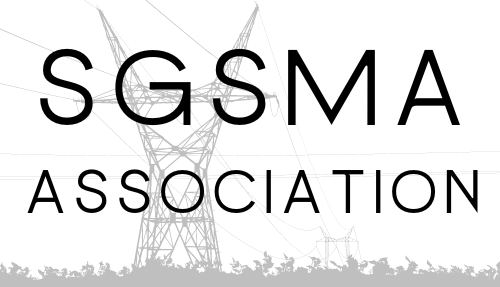Synchronized Measurements in the Utility Control Center San Diego Gas & Electric
Date: Thursday, May 27 Time:
Add to calendar: Panel4.ics
 Name of the organizer: Dr. Greg Zweigle, SEL Fellow Engineer
Name of the organizer: Dr. Greg Zweigle, SEL Fellow Engineer
Email: Greg_Zweigle@selinc.com
Organisation: Schweitzer Engineering Laboratories, USA
Short biography of the chair: Gregary C. Zweigle is a fellow engineer at Schweitzer Engineering Laboratories, Inc. (SEL) and leads a research team to develop wide-area power system analysis and control solutions. He holds a Ph.D. in electrical engineering and computer science and master’s degrees in (physical) chemistry and electrical engineering from Washington State University, and he holds a bachelor’s degree in physics from Northwest Nazarene University.
Abstract: San Diego Gas & Electric (SDG&E®) is presently working on Phase 2 of the Wide Area Situational Awareness (WASA) synchronized measurement program. While Phase 1 explored new technologies in collaboration with engineers and operators, the goal of Phase 2 is a production-grade, fully regulatory compliant Visualization Software System (VSS) for use by grid operators, operations support engineers, reliability engineers, and managers. The system provides a single information source for visualization and navigation of all time-series applications. It is integrated with the real-time operations system and facilitates exchange of data with neighboring utilities and the ISO to provide operators a wide area view of the entire regional grid. As part of Phase 2, the WASA development team is working directly with system operators to get their feedback on synchrophasor applications providing the most value for their daily work and for SDG&E. This panel will share synchronized measurement applications, system architecture, data standards, along with testing, commissioning, and implementation challenges.
Panelist 1:
 Name: Tariq Rahman
Name: Tariq Rahman
Organisation: San Diego Gas & Electric, USA
Title of presentation: Vision, applications, and roadmap
Abstract: San Diego Gas & Electric (SDG&E) installed its first PMU in 2007 as a pilot project and soon realized its potential to be a technology that could revolutionize the way the electric grid is monitored and operated. The impact of 2007 wildfire and 2011 blackout to SDG&E service area further solidified SDG&E’s vision to invest in this technology as part of an overall smart grid roadmap. In 2011 SDG&E formally launched the Transmission Synchrophasor Project to develop and build a production-grade wide-area situational awareness (WASA) system. WASA system aims to give the operators and engineers a tool with advanced applications that would provide complete visibility of entire WECC grid, and early warning capabilities on potential threats to SDG&E system. With the high penetration of Inverter Based Resources (IBR), 50% today and 100% carbon neutral grid by 2045, SDG&E plans to further develop WASA system from monitoring and early warning to also taking automated control actions for the future grid. This will be accomplished by applying advanced technologies such as AI/ML, big data analytics on an expanded data sources including point-on-wave data, weather condition data, and more.
Panelist 2:
 Name: Dan Brancaccio
Name: Dan Brancaccio
Organisation: Quanta Technologies, USA
Title of presentation: WASA architecture, data representation, bad data detection, and system design
Abstract: SDG&E is now focused on integrating real-time collection of synchrophasor data as well as visualization and operator interface systems to aid in real-time systems operations. Additional PMU’s deployed since the completion of the first phase in 2013, covering all 500 kV, 230 kV and most 69 kV tie lines, has been challenging with the additional coverage and commensurate increase in the communication and data archiving infrastructure. However, the additional coverage, as well as sharing of synchrophasor data with neighbors using the WISP WAN, will unlock additional benefits, ultimately enabling a full coverage WASA visualization tool. The presentation will review the challenges supporting the increase in PMU deployment including network communications, data availability, and archiving strategies.
Panelist 3:

Name: Bill Cook
Organisation: San Diego Gas & Electric – retired, USA
Title of presentation: Operator training, operational procedures, and operator acceptance strategies
Abstract: The project team created a use case document to demonstrate the value of using the WASA system in analyzing SDG&E system events of different types. System Operator acceptance is straightforward when the Operators can see the WASA application used to monitor high-resolution voltage, current, power flow and phase angle data that is not available on the SCADA system. Using the earlier WASA system, we were able to review voltage oscillation data for disturbances involving a Statcom system and inverter-based resources (IBRs). Using the earlier system, a 500kV interconnection line trip was reviewed, and it was quickly determined the line tripped due to a relay mis-operation, and the line could be readily restored since there was no fault on the line. In the testing of the current system, we were able to assess the operation of IBRs during a 500kV line fault, where the IBR power output dropped to zero for one second after fault clearing, and then immediately returned to pre-fault levels. This power shift was not seen on SCADA, since all power output changes occurred between scans. Displays have been developed to show SDG&E’s black start paths, and they will be a valuable addition to SDG&E’s system restoration procedures. The team has started the development of the training program for System Operators, where we will demonstrate the WASA system methodology, including hands-on review of actual system events.
Panelist 4:

Name: Dr. Md Arif Khan
Organisation: Schweitzer Engineering Laboratories, USA
Title of presentation: Synchronized Measurement Analytics Being Deployed – Modal Analysis, Automated Disturbance Detection, Disturbance Source Location, and Many More.
Abstract: As PMU and WAMS technology has reached a high degree of maturity and synchrophasor measurement-based applications are gaining more credibility, many utilities have started deploying such applications in control rooms for power system operations. Time-synchronized and high-rate PMU data enables wide-area monitoring and detailed investigation of power system events, which was not possible before with SCADA data. Modal analysis, disturbance detection, disturbance source location, wide-area voltage stability and frequency monitoring, dynamic line rating, phase angle monitoring, and islanding detection are a few examples of such applications that are providing more insight into the power system states for better, faster, and more reliable power system operations. Often such applications provide simpler solutions to power system operators, making their day’s work orders of magnitude easier.
